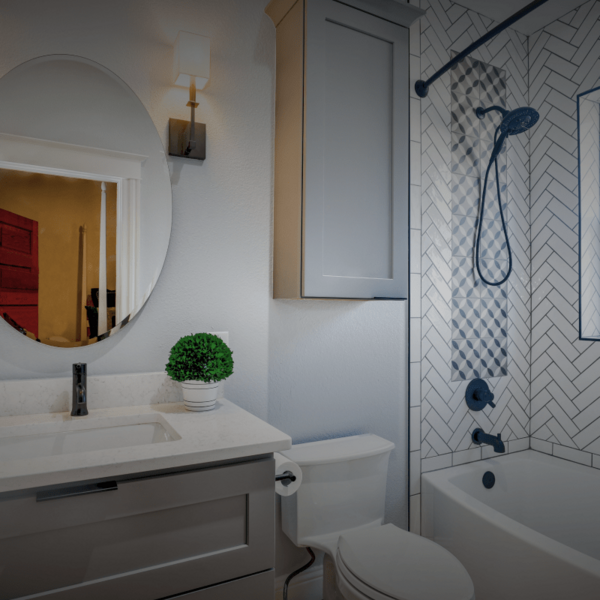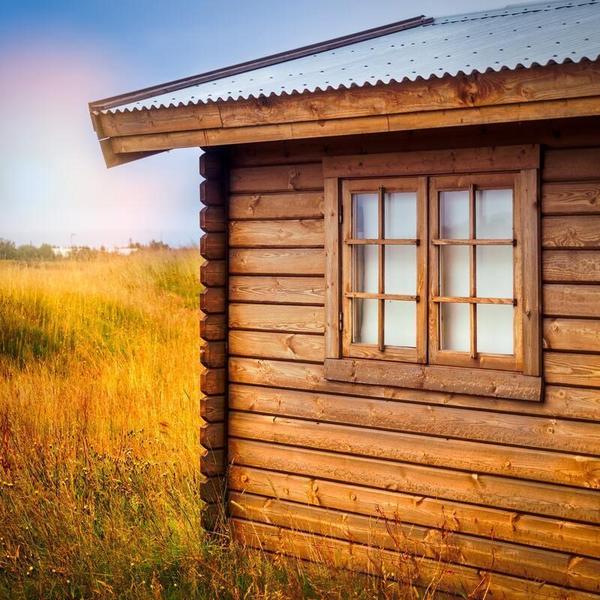When I had to choose appliances for my off-grid tiny home, I was looking for three things:
- performance
- convenience
- energy-efficiency
The good news is that modern appliances are designed to be as energy-efficient as they come.
The only problem is that regular-size appliances sometimes just don’t fit into small homes.
Luckily, there are many products that are specifically designed for off-grid consumers to be used with solar power systems and RVs.
The appliances that I used might be discontinued by now. But drawing from my experience, these are the best off-grid appliances for tiny homes you can get.
How to Choose High-Quality off-grid Appliances?
There are 4 main aspects you should look for when picking appliances for your tiny house:
- Energy efficiency
- Water usage
- Ease of maintenance
- Available space
Energy consumption
Energy consumption is probably the most important factor for off-grid enthusiasts, especially if your tiny house is running on a solar system with a battery bank.
In an off-grid situation, energy resources are scarce and for the most part, you can choose between gas-powered or energy-efficient electric appliances that work with a solar battery + inverter combo.
When looking for an appliance, check for the EnergyStar label. It shows you how much energy the appliance has used in a year and what level of usage they used to test it.
For example, you can find out how much energy a washing machine uses for one load of laundry by dividing the total yearly consumption by the number of loads you predict in a year.
Another thing to keep in mind is the surge wattage - the short peak of power that appliances with electric motors draw when turned on.
Check your solar inverter’s surge wattage when shopping for bigger appliances. If the appliance sucks up more power to start than the inverter can handle, the protection will shut off the power supply.
Water usage
Appliances like washing machines, dishwashers, and water heaters need plumbing connections.
This shouldn’t be a problem, because many prefabricated tiny houses already come with installed plumbing.
However, you should find out how much water each system uses per cycle and the rate at which it draws it. This way, you won’t overload your water pump and pressure tank.
Ease of maintenance
Most off-grid-appropriate appliances are purposely built for off-grid usage so their maintenance is no more difficult than those used at home.
For this reason, I always prefer electrical appliances to those that run on fossil fuels.
Propane refrigerators might be cheaper, but there are definitely more things to go wrong.
The same goes for propane tankless water heaters.
If something does go awry, accept that you might need to call in the pros to fix it, unless you want to take even more tools with you. Experts using appliance repair software should be able to sort off-grid setups in a flash.
Available space
This one seems obvious but, you need to make sure the appliance you’re buying fits in your off-grid home.
Space is an absolute premium in small homes, so you need to save every inch of it.
6 Must-Have Off-Grid Appliances for Your Tiny House
The solar kit: panels + battery + inverter
If your tiny house is in a spot that gets lots of sunlight, there’s no better solution than solar panels. They don’t come cheap to install, but they give you clear access to electricity.
They are quiet and don’t have any emissions. The initial cost is steeper than other off-grid power sources. However, the most convenient power source in the off-grid market once you set it up.
Your main concern with a home solar system is the size, which depends on your energy usage or how many kilowatts you need.
For tiny houses, I recommend flexible solar panels, like this Renogy 100-Watt Flexible Solar Panel. It has 100 watts output and bends to 248 degrees, so you can easily fix it to any shape of roof or siding.
These panels have an anti-scratch coating and require almost no maintenance.
The manufacturer gives a 25-year warranty.
However, since solar panels only give power in sunlight, you need a solar battery to store the energy they produce.
Nowadays, you have two options to choose from - Lithium-Ion and lead-acid batteries.
If you don’t want to spend much, I recommend this Renogy Deep Cycle 12V AGM Battery. It uses lead-acid technology but has a low discharge and leak-proof case.
A single battery will power your fridge, microwave, coffeemaker, and laptop, and if you need more power, you can always hook up more of them to cover your daily energy consumption.
Yet, most appliances in your tiny house use alternate current (AC), and your solar battery stores direct current (DC).
This is why you need a solar inverter to convert DC into AC. The solar inverter will also act as your voltage controller and electrical protection.
If you don’t need fancy functions and WiFi connectivity, there’s hardly a better solar inverter for money than Renogy 3000W 12 Volt Pure Sine Wave Inverter.
Keep in mind that peak solar power is available for 4-5 hours a day. You need to make the most out of it, so make sure to choose quality off-grid solar appliances.
Off-grid water pump
Water pumps are an essential part of your tiny house plumbing system. They provide pressure so that water can flow from your storage tank or well to your under-sink water filter and then to your appliances.
These water pumps work great with a tiny house rainwater harvesting system.
For a tiny home, you don’t need anything more powerful than 5.5 gallons per minute - enough to run multiple appliances at once. This is why I recommend the Seaflo 55-series water pump.
The 55-series includes some of the most energy-efficient models which run on 12V DC power, so you can easily hook it up to your solar battery.
Off-grid refrigerator
This is the appliance I bought right after my solar kit. This makes sense because you can live without appliances for some time, but you need to keep your food fresh.
You can choose between a traditional electric, DC electric, or propane refrigerator.
While propane appliances once ruled the off-grid appliance market, now they are facing tough competition from increasingly power-efficient electric and DC types of refrigerators.
For example, this dual-zone Unique UGP-275L Solar Off Grid Refrigerator draws only 63W - like an average laptop - and has a capacity of 10 cu ft.
Still, not everyone who needs a car is looking for a Cadillac. If you’re on a budget, you’d be more than happy with the ICECO VL60 Off Grid Refrigerator. You can power this one even with your car’s 12V port.
Off-grid washing machine
As with every industry, manufacturers are looking to decrease power draw and make more efficient major appliances.
Still, I recommend you drop a washer/dryer combo and look for a high-efficiency washing machine with top energy- and water-saving features.
This Magic Chef White MCSTCW09W1 Compact Washer is a portable washing machine designed especially for tiny spaces and off-grid use. These top-load washing machines are among the most energy-efficient products on the market.
You might struggle to squeeze in your king-size comforter but this machine uses only 23kW per year.
Just hook it up to your sink to fill it with water and choose one of five different washing modes.
The Magic Chef can drain into the sink or traditionally, into a standpipe.
Off-grid water heater
From a comfort perspective, a high-quality off-grid water heater is one of the best upgrades you can make to your tiny home.
Your top choice here is an electric or gas/propane tankless water heater.
An electric tank water heater has no place in a tiny house.
A solar water heating system might be a logical step. The idea of heating water using solar power is old as human existence. In this type of water heater, solar tubes heat water that is stored in an insulated and pressurized tank.
This setup, however, doesn’t make sense if the outdoor temperatures are low where you live. The same goes for a wood stove water heater.
They might have been popular once, but electric tankless water heaters are power hogs. Not only do they use from 500 to 2,500 watts per day, but also have a significant starting surge as well.
Tankless propane water heaters are small, easy to install, and don’t have a continuous power draw to keep hot water at temperature.
On the other hand, propane tankless water heaters need a constant supply of propane. So you should either have a stationary propane tank on your property and have it filled by a delivery service or haul heavy portable tanks yourself.
I went with a propane tankless water heater and can recommend one of the most efficient models, the Eccotemp L10 Portable Outdoor Tankless Water Heater.
This tankless water heater is water-efficient, weighs only about 13 lbs, and is perfect if you’re looking to save space. In this type of water heater, cold water is heated the moment you need it. There’s no tank to store it.
It takes much less space than a standard propane tank water heater and uses only about 1.5 lbs of propane per day.
The Eccotemo comes with a 9 ft propane hose and regulator that lets you hook it up to a regular-size 20 lb propane tank.
Off-grid stove
Like I said for electric water heaters, an electric stove can be just as big of a power hog as an off-grid stove.
You can run an electric range, but keep in mind that electric heating is one of the most energy-intensive processes.
Especially when you know that there’s a wide choice of excellent off-grid gas ranges and ovens to choose from.
You can look up gas ranges of standard sizes, but there are also many smaller ones designed for off-grid living.
If you’re building a tiny home yourself, I recommend you find room for a residential-size standard range designed for grid electricity or even a wood stove.
On the other hand, if you prefer electric kitchen stoves all the way, you can’t go wrong with this NutriChef PKRTO28 Convection Oven.
It comes with two hot plates on top - perfect for boiling pasta or stir-frying eggs.
The oven can heat up to 450 degrees F, and has a capacity of more than 30 quarts, which is enough for roasting a 4-lb chicken.
Wrapping up
I hope this short guide has helped you make the right decisions for choosing off-grid DC appliances or their propane counterparts. The setup that I’ve described works perfectly for my tiny house. Your mileage may vary, but if you keep in mind that off-grid appliances should be energy-efficient, compact, and easy to maintain, you’re on the right track.



